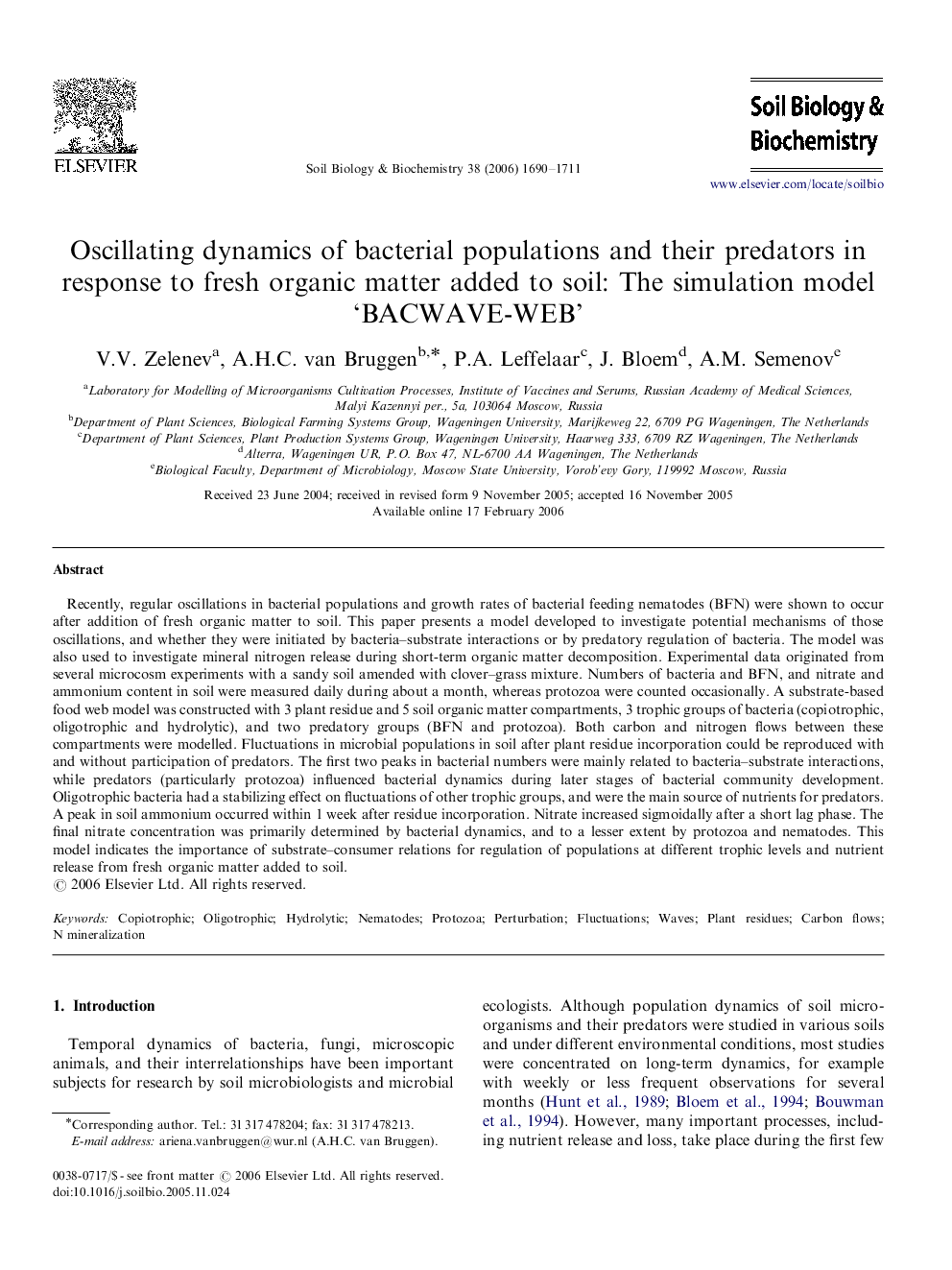| کد مقاله | کد نشریه | سال انتشار | مقاله انگلیسی | نسخه تمام متن |
|---|---|---|---|---|
| 2026574 | 1070034 | 2006 | 22 صفحه PDF | دانلود رایگان |

Recently, regular oscillations in bacterial populations and growth rates of bacterial feeding nematodes (BFN) were shown to occur after addition of fresh organic matter to soil. This paper presents a model developed to investigate potential mechanisms of those oscillations, and whether they were initiated by bacteria–substrate interactions or by predatory regulation of bacteria. The model was also used to investigate mineral nitrogen release during short-term organic matter decomposition. Experimental data originated from several microcosm experiments with a sandy soil amended with clover–grass mixture. Numbers of bacteria and BFN, and nitrate and ammonium content in soil were measured daily during about a month, whereas protozoa were counted occasionally. A substrate-based food web model was constructed with 3 plant residue and 5 soil organic matter compartments, 3 trophic groups of bacteria (copiotrophic, oligotrophic and hydrolytic), and two predatory groups (BFN and protozoa). Both carbon and nitrogen flows between these compartments were modelled. Fluctuations in microbial populations in soil after plant residue incorporation could be reproduced with and without participation of predators. The first two peaks in bacterial numbers were mainly related to bacteria–substrate interactions, while predators (particularly protozoa) influenced bacterial dynamics during later stages of bacterial community development. Oligotrophic bacteria had a stabilizing effect on fluctuations of other trophic groups, and were the main source of nutrients for predators. A peak in soil ammonium occurred within 1 week after residue incorporation. Nitrate increased sigmoidally after a short lag phase. The final nitrate concentration was primarily determined by bacterial dynamics, and to a lesser extent by protozoa and nematodes. This model indicates the importance of substrate–consumer relations for regulation of populations at different trophic levels and nutrient release from fresh organic matter added to soil.
Journal: Soil Biology and Biochemistry - Volume 38, Issue 7, July 2006, Pages 1690–1711